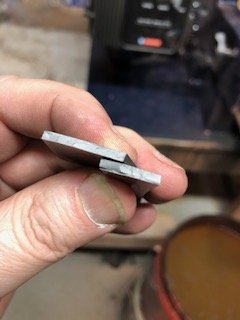Heikki
KNIFE MAKER
So I just finished profiling 3 chef knives from .090" 15n20. This will be my first time working with this steel. I've done some research on HT, so the plan is to austenize at 1480*, hold for 10 minutes, then into Parks 50 and off to temper. Looking for 64-65 HRC as quenched. I also plan to do a couple coupons first and test hardness out of the quench.
My questions for those of you that have more experience with this steel:
-What hardness should I shoot for for kitchen knives with this steel? I've read anywhere from 60 to 64.
-Would it be better to grind pre or post HT? I normally grind pre heat treat.
-How prone to warping is it? I have 3/4" aluminum plates that I can use to help if needed.
Any advice is appreciated, just looking to cover all my bases so I'm prepared.
Thanks!
My questions for those of you that have more experience with this steel:
-What hardness should I shoot for for kitchen knives with this steel? I've read anywhere from 60 to 64.
-Would it be better to grind pre or post HT? I normally grind pre heat treat.
-How prone to warping is it? I have 3/4" aluminum plates that I can use to help if needed.
Any advice is appreciated, just looking to cover all my bases so I'm prepared.
Thanks!

